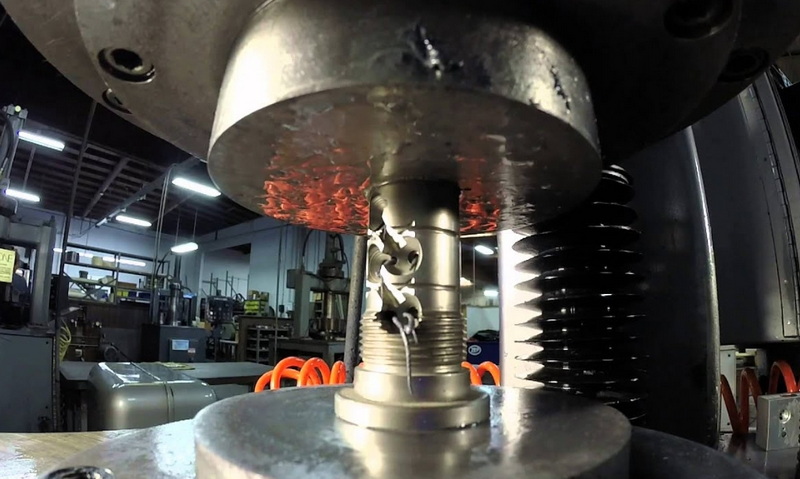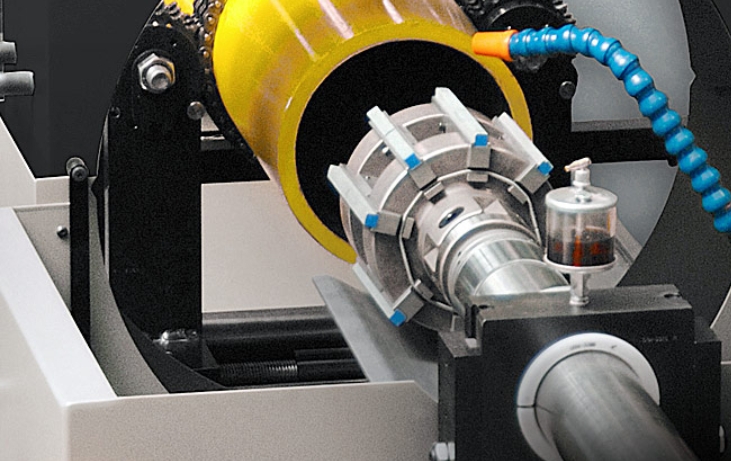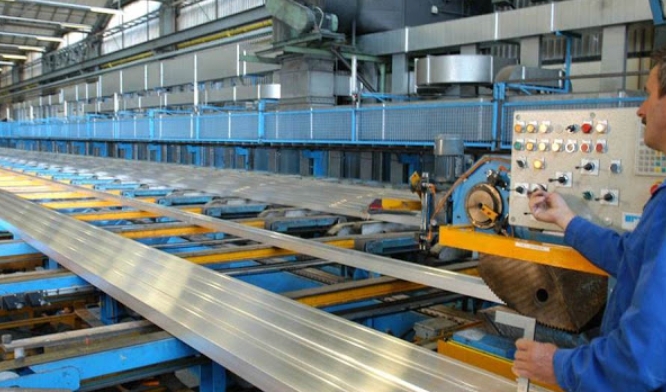Content Menu
● Understanding Extrusion Honing Equipment
>> Key Technologies in Extrusion Honing Equipment
● Latest Innovations in Extrusion Honing Equipment
>> 1. Automation and Smart Integration
>>> Benefits of Automation:
>> 2. Modular and Flexible Machine Designs
>>> Key Features:
>> 3. Advanced Process Control and Digitalization
>>> Digital Advancements:
>> 4. Enhanced Abrasive Media and Process Customization
>>> Media Innovations:
>> 5. Hybrid and Additive Manufacturing Integration
>>> Integration Benefits:
>> 6. Electrochemical Machining (ECM) Advancements
>>> ECM Highlights:
>> 7. Thermal Deburring (TEM) for High Productivity
>>> TEM Advantages:
● Applications Across Industries
>> Aerospace
>> Medical Devices
>> Automotive
>> Energy and Power Generation
● The Role of Digitalization and Industry 4.0
>> Key Digital Trends:
● Sustainability and Environmental Considerations
● Future Outlook
● Conclusion
● FAQ
>> 1. What is the main advantage of using extrusion honing equipment for finishing additive manufactured parts?
>> 2. How does automation improve the performance of extrusion honing equipment?
>> 3. What are the environmental benefits of modern extrusion honing equipment?
>> 4. Can extrusion honing equipment be customized for specific materials or applications?
>> 5. What role does digitalization play in the latest extrusion honing equipment?
● Citations:
Extrusion honing equipment has long been a cornerstone of precision surface finishing, deburring, and flow optimization for complex components across industries such as aerospace, automotive, medical, and energy. As manufacturing evolves with new materials, intricate geometries, and higher performance demands, extrusion honing equipment must continuously innovate to keep pace. This article explores the latest advancements in extrusion honing equipment, focusing on technological breakthroughs, integration with automation, enhanced process control, and the expanding capabilities that are shaping the future of precision finishing.

Understanding Extrusion Honing Equipment
Extrusion honing—often referred to as abrasive flow machining (AFM)—is a finishing process where a semi-solid abrasive media is forced through internal passages or over surfaces to smooth, deburr, radius, or polish components. The process is highly valued for its ability to reach internal and otherwise inaccessible areas, delivering consistent and repeatable results.
Key Technologies in Extrusion Honing Equipment
- Abrasive Flow Machining (AFM): Uses a viscoelastic abrasive media to polish and deburr complex internal geometries.
- Electrochemical Machining (ECM): Employs controlled anodic dissolution for precise material removal without mechanical or thermal stress.
- Thermal Energy Method (TEM): Utilizes controlled explosions to remove burrs from hard-to-reach areas.
- Dynamic ECM and Microflow: Advanced variants for specialized applications, such as micro-deburring and flow tuning[1][2][5].
Latest Innovations in Extrusion Honing Equipment
1. Automation and Smart Integration
Modern extrusion honing equipment is increasingly designed for seamless integration into automated production lines. Automated solutions reduce manual intervention, improve consistency, and boost throughput. For example, ECM systems can now be fully integrated into automated lines for high-volume production, such as knee implant manufacturing, where strict dimensional tolerances and parallelism are critical[1].
Benefits of Automation:
- Consistent Quality: Automated process control minimizes human error.
- Higher Productivity: Continuous, unattended operation increases output.
- Data-Driven Optimization: Real-time monitoring and analytics enable predictive maintenance and process optimization.
2. Modular and Flexible Machine Designs
Recent innovations include modular extrusion honing equipment that can be configured as single, dual, or multi-cell systems. This flexibility allows manufacturers to scale operations efficiently and adapt to changing production needs. For instance, the Extrude Hone EVO ECM platform offers modular construction, enabling easy expansion and integration into existing manufacturing environments[3].
Key Features:
- Scalability: Add or remove modules as production requirements change.
- Customizability: Tailor machine configurations for specific applications.
- Ease of Integration: Plug-and-play interfaces for quick setup.
3. Advanced Process Control and Digitalization
Digital transformation is reshaping extrusion honing equipment with advanced process control, real-time monitoring, and data analytics. Modern machines are equipped with sensors and software that allow for online parameter adjustment, ensuring optimal results and reducing scrap rates.
Digital Advancements:
- Online Monitoring: Track process variables (pressure, flow, temperature) in real time.
- Closed-Loop Control: Automatically adjusts parameters for consistent output.
- Remote Diagnostics: Enables predictive maintenance and rapid troubleshooting[3][4].
4. Enhanced Abrasive Media and Process Customization
The development of new abrasive media formulations has expanded the capabilities of extrusion honing equipment. Media can now be tailored for specific materials (e.g., titanium, nickel alloys, ceramics) and applications, such as micro-polishing or aggressive deburring. This customization ensures optimal surface finishes and extends the life of critical components[2][5].
Media Innovations:
- Microflow Media: Ultra-low viscosity for fine polishing and micro-deburring.
- Specialized Abrasives: Designed for additive manufacturing (AM) components with complex internal channels.
- Eco-Friendly Formulations: Reduced environmental impact and improved safety.
5. Hybrid and Additive Manufacturing Integration
The rise of additive manufacturing (3D printing) has created new challenges for surface finishing, particularly for internal passages with rough surfaces. Extrusion honing equipment is now routinely used to finish AM parts, removing residual powder and smoothing surfaces that are otherwise inaccessible. Hybrid machines combine traditional CNC machining with extrusion honing, enabling “done-in-one” manufacturing for complex parts[2][4].
Integration Benefits:
- Improved Surface Quality: Achieves up to 10x reduction in surface roughness for AM parts.
- Complex Geometry Processing: Reaches areas impossible to finish manually.
- Design Flexibility: Supports organic, weight-saving designs in aerospace and medical devices.
6. Electrochemical Machining (ECM) Advancements
ECM technology has seen significant innovation, particularly with the introduction of dynamic ECM and improved power supply systems. The latest ECM machines feature generator technology delivering between 3 and 100 kW, allowing precise control over material removal. Dynamic ECM enables operations such as rifling or drilling in complex, hard-to-reach areas, while new filtration systems ensure clean and efficient electrolyte management[1][3].
ECM Highlights:
- No Stray Machining Attack: Improved process control eliminates unwanted material removal.
- Stress-Free Machining: No mechanical or thermal impact on the workpiece.
- High Throughput: Processes hundreds of features in minutes, ideal for high-volume applications.
7. Thermal Deburring (TEM) for High Productivity
While traditionally underutilized in aerospace, TEM is gaining traction for its ability to rapidly deburr simple parts at low cost. Modern TEM systems are safer, more efficient, and capable of handling a wider range of materials and part geometries[2].
TEM Advantages:
- Speed: Removes burrs from multiple parts simultaneously in seconds.
- Uniformity: Ensures consistent deburring across all features.
- Cost-Effectiveness: Reduces labor costs and risk of manual error.

Applications Across Industries
Aerospace
Extrusion honing equipment is essential for finishing turbine blades, fuel manifolds, nozzles, and other critical components. The ability to process internal passages and complex geometries ensures optimal airflow and performance, while supporting the trend toward lighter, more efficient designs[2].
Medical Devices
Precision and consistency are paramount in medical device manufacturing. Extrusion honing equipment delivers the required surface finishes for implants and surgical instruments, meeting stringent regulatory standards[1].
Automotive
From fuel injectors to transmission components, extrusion honing equipment enhances durability, reduces friction, and ensures reliable performance in demanding automotive applications[5].
Energy and Power Generation
Extrusion honing is used to finish components such as turbine blades, pump housings, and flow channels, improving efficiency and extending service life in harsh operating environments.
The Role of Digitalization and Industry 4.0
The integration of extrusion honing equipment into digital manufacturing ecosystems is accelerating. IoT-enabled machines, cloud-based process monitoring, and digital twins are transforming how manufacturers manage and optimize finishing operations[4].
Key Digital Trends:
- Predictive Maintenance: Machine learning algorithms analyze sensor data to predict failures before they occur.
- Process Traceability: Digital records ensure compliance and facilitate continuous improvement.
- Remote Operation: Operators can monitor and adjust machines from anywhere, increasing flexibility and responsiveness.
Sustainability and Environmental Considerations
Modern extrusion honing equipment is designed with sustainability in mind. Innovations include closed-loop media recycling, reduced energy consumption, and eco-friendly abrasive formulations. These advancements help manufacturers meet environmental regulations and reduce their carbon footprint.
Future Outlook
The future of extrusion honing equipment will be defined by greater automation, smarter process control, and deeper integration with digital manufacturing. As materials and part designs become more complex, the demand for advanced finishing solutions will only grow. Manufacturers who invest in the latest extrusion honing equipment will be well-positioned to deliver high-quality, high-performance products in competitive markets.
Conclusion
Extrusion honing equipment has undergone significant innovation in recent years, driven by the demands of advanced manufacturing. From automation and modular designs to digital process control and hybrid integration with additive manufacturing, the latest equipment offers unprecedented flexibility, precision, and efficiency. As industries continue to push the boundaries of design and performance, extrusion honing equipment will remain a vital tool for achieving the highest standards of surface quality and component reliability.

FAQ
1. What is the main advantage of using extrusion honing equipment for finishing additive manufactured parts?
Extrusion honing equipment, particularly abrasive flow machining (AFM), excels at finishing internal passages and complex geometries typical of additive manufactured parts. It can achieve up to a tenfold improvement in surface roughness, remove residual powder, and reach areas that are inaccessible to manual finishing, making it the preferred solution for AM components[2].
2. How does automation improve the performance of extrusion honing equipment?
Automation enhances extrusion honing equipment by ensuring consistent quality, reducing manual labor, and increasing throughput. Automated lines enable real-time process monitoring, parameter adjustment, and predictive maintenance, resulting in higher productivity and lower operational costs[1][3].
3. What are the environmental benefits of modern extrusion honing equipment?
Recent innovations include eco-friendly abrasive media, closed-loop recycling systems, and reduced energy consumption. These features help manufacturers minimize waste, comply with environmental regulations, and reduce their overall carbon footprint while maintaining high-quality finishing standards.
4. Can extrusion honing equipment be customized for specific materials or applications?
Yes, extrusion honing equipment can be highly customized. Abrasive media formulations, machine configurations, and process parameters can be tailored to suit specific materials (such as titanium, nickel alloys, or ceramics) and applications (like micro-deburring or flow tuning), ensuring optimal results for each use case[5].
5. What role does digitalization play in the latest extrusion honing equipment?
Digitalization enables advanced process control, real-time monitoring, and data-driven optimization. IoT-enabled machines, cloud-based analytics, and digital twins allow manufacturers to monitor equipment remotely, predict maintenance needs, and ensure traceability, leading to more efficient and reliable finishing operations[3][4].
Citations:
[1] https://www.extrudehone.com/2025/02/27/automated-finishing-solutions-by-extrude-hone-at-timtos-2025/
[2] https://aerospaceglobalnews.com/news/extrude-hone-technology-in-the-air-and-beyond/
[3] https://www.mmsonline.com/products/electrochemical-honing-machine-performs-without-stray-machining-attack
[4] https://www.3erp.com/blog/future-of-cnc-machining/
[5] https://www.productivity.com/vendors/extrude-hone/
[6] https://www.extrudehone.com/2025/02/10/iwa-2025-ecm-rifling-and-deburring-solutions-by-extrude-hone/
[7] https://www.extrusion-info.com/upload/magazines/extr_int/1-2025/files/assets/common/downloads/Extrusion%20International%201-2025.pdf
[8] https://m4snews.com/news/top-ten-machine-tool-innovations-whats-transforming-manufacturing-in-2025.html
[9] https://www.thermal-tech.com/liquid-injection-honing/
[10] https://www.midlandsaerospace.org.uk/members/extrude-hone-ltd






















